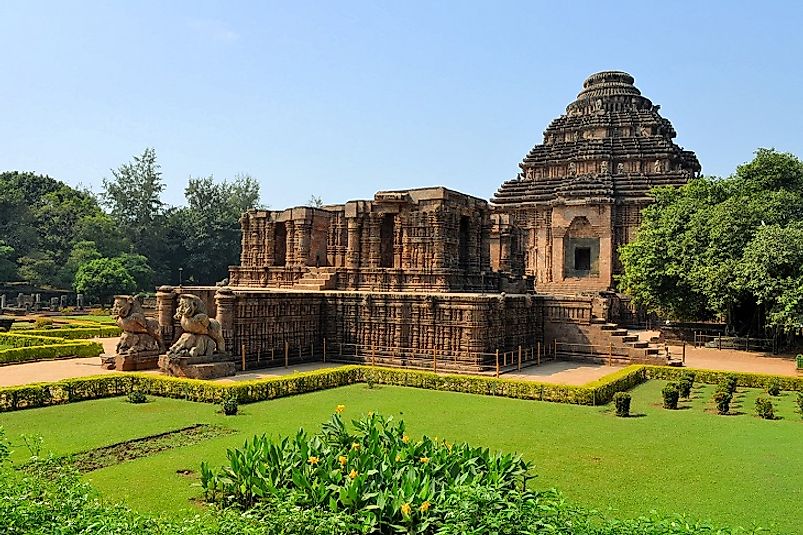Where Is The Sun Temple of Konark?

5. Background and Construction
The Konark Sun Temple in the eastern Indian state of Orissa, is well-known for its unique and impressive art and architecture. The temple, dedicated to the Sun God, Surya, was built sometime around 1250 by the Indian king from the Eastern Ganga Dynasty, King Narasimhadeva I. The Konark Sun Temple represents a heavily ornamented chariot of the Sun God, built with Khondalite rocks in the Kalinga style of architecture. The chariot is complete with 12 pairs of intricately designed giant wheels, and seven stone carved horses. Recognizing the outstanding architectural and historical value of this temple, UNESCO declared it as a World Heritage Site in 1984.
4. Notable Architectural Components
The Konark Sun Temple has a number of noteworthy architectural marvels. Each of the wheels of the chariot is a giant sun-dial, accurately predicting the time of the day to a minute. The detailed motifs on the wheels and the exterior walls of the temple symbolizes the seasons and months of the year. The seven horses could represent the seven colours of the rainbow or the seven “chakras” of the body. The temple is also positioned in a manner that the first rays of the sun manage to strike the entrance of the temple at sunrise. Though large parts of the Konark Sun Temple have crumbled to ruins, what remains still has outstanding value. The walls, pillars, wheels and porches of the temple are carved with exquisite religious and artistic symbols as well as erotic sculptures and sculptures of fantastic lions, dancers and musicians, similar to the Khajuraho Temples of India. There is also a legend claiming that the temple was built over 12 years by 1,200 artisans.
3. Religious Importance
The Konark Sun Temple represents the reverence of Hindus for natural objects like the sun. The sun here is treated as divine and personified as the Sun God, Surya, who is known to ride his chariot in heaven, driven by seven horses and 12 pairs of wheels. Though the Sun God is mentioned in the Vedas, the temple at Konark represents the Sun God in a more elaborate, personified form where he is linked with human-like qualities, with predecessors, wives,and successors. Though sun worship is currently prevalent primarily among certain sections of Hindus like the Saurya sect and the Smartas, Hindus as a whole also associate the sun with life-giving power and regard the Surya as one of the revered divine beings of their religion.
2. Threats and Conservation
The Konark Sun Temple, though an architectural wonder of the ancient world, is largely in ruins. There is very little known about what caused the loss of the main building of the temple. While some historians claim that the temple was never completed, the fact that several accounts of the 14th Century mentioning the performance of deity worship rituals in the temple disproves this thought. However, even though the temple was completed, the reason of collapse of its main temple is still shrouded in mystery. While some archaeologists believe that the weak foundation of the temple or some form of natural catastrophe might have damaged its main structure, others claim that a Muslim invader, Kalapahar, damaged the temple. However, it is quite clear from evidence collected at the site by scientists that the temple was neglected for a long period of time. However, presently, the temple is in safe hands and protected under Indian law and maintained by the Indian Government.
1. Historical Significance and Tourism
The Konark Sun Temple reflects the prosperity and stability of its building dynasty, the ancient Indian Empire of the Gangas. The aesthetic beauty and artistic symbolism in the temple also provide us an idea of the religious, social, cultural and political life of the people of 13th Century India. Due to its overwhelming grandeur and extreme historical, architectural and religious significance, the Konark Sun Temple is visited by thousands of tourists each year from all parts of the globe.







